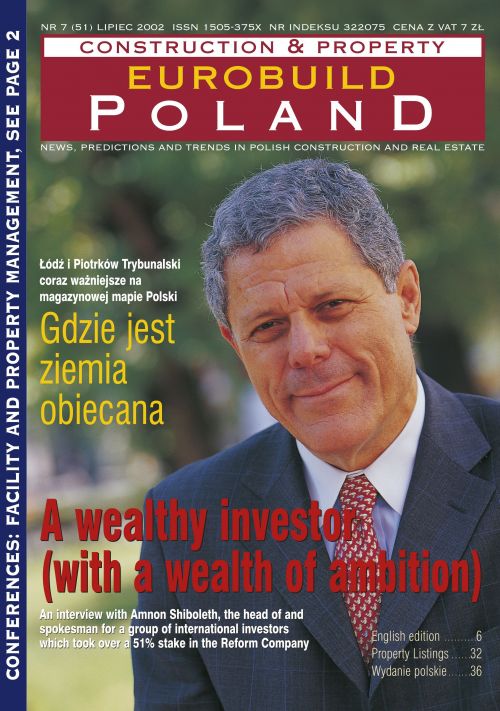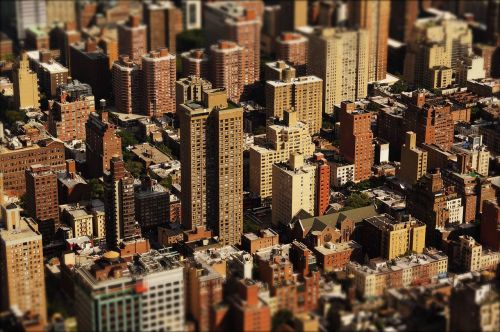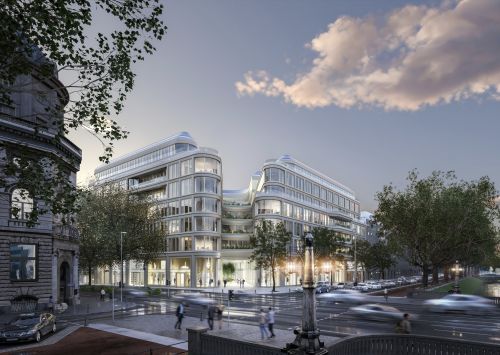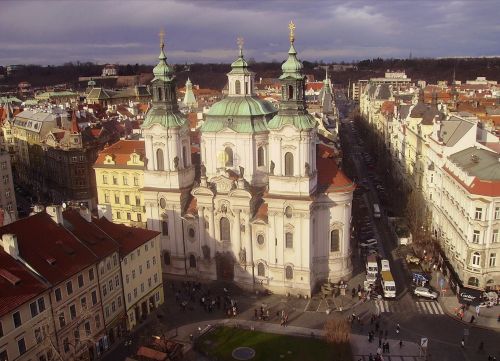Crabs, hay and retail space
Dutch based ING Real Estate announced its plan to create ,a lively city centre hub, with a big city character," on a 6 hectare site in the heart of Gdańsk's old town. The developer plans to build a PLN 1 bln mixed-use complex comprising a hotel, leisure and entertainment centre, offices and flats. Although the project is currently at the design stage, involvement by the city authorities indicates that the investment has a good chance of success.
ING's proposed development is to be built on 2 squares located at the
junction of ul. Grunwaldzka and Al. Zwycięstwa with Trakt Królewski (the main Tri-City
artery).
According to historical reports, people sold crabs and hay on this site, giving the
squares their names; Plac Rakowy (Crab Square) and Plac Sienny (Hay Square), hence the
name of ING's investment - ,Targ Rakowy Targ Sienny" (Crab and Hay Market).
The investor plans to develop 60,000 sqm of retail space, an 8,000 sqm leisure and
entertainment centre, 23,000 sqm of offices, over 14,000 sqm of residential units, as well
as a 12,000 sqm hotel and a 48,000sqm car park.
The site is currently occupied by a convent, car park, an indoor market hall, and some
free standing hut-type buildings. The market and hut-type buildings will be demolished.
,If we manage to select the right mix of facilities in the complex, we will create a
lively city centre hub," says Eugen Houx, ING Real Estate's vice president.
ING has been preparing this scheme for a year and a half. The first letter of intent was
signed with Gdańsk city authorities in autumn 2000. According to ING's Jan van
Hensbergen, however, despite the fact that the relationship with the Gdańsk authorities
was going well back then, the future of the project was still questioned. Why? ,Results of
studies carried out, and land inventories of the site showed that the planned project
would be too small and not profitable," says Jerzy Hańczewski, who is supervising
this investment together with Eugen Houx.
This is why ING and Gdańsk authorities decided to co-operate with PKP (the Polish
Railways) on this project. When combined with land belonging to PKP, the size of ING's
proposed scheme was increased considerably. The inclusion of PKP in this project means
that the construction of a new station has been incorporated in the design plans. The
railway is the easiest means of transport between the Tri-City area.
The initial architectural design was prepared by the Dutch based Mecanoo Architecten.
Mecanoo's Prof. Francine Houben said that the Targ Rakowy Targ Sienny scheme is still
being designed and nothing final has been agreed yet.
ING, the city of Gdańsk and PKP S.A. will establish a separate company which will carry
out the investment. ING will finance the whole project, while the city and PKP will
contribute land. It is not known yet how the shares will be divided among the partners.
Taking into account the attitude of PKP towards its business partners in the past, (e.g.
with Tishman Speyer Properties on the Nowe Miasto investment in Kraków), it may be fair
to assume that PKP could obtain considerable stock. ING, however, already has experience
working with PKP on it's ,Złote Tarasy" project in Warsaw.
When can we expect to see this project get underway? ING have a few hurdles they need to
cross first. One of these is not a typical problem facing developers. The site on which
the Dutch company is planning to build its scheme is included in the local urban
development plan and is already zoned for this type of development (retail and services).
The problem is that the plan is expected to be revised. City authorities and ING are
assuring us, however, that if the urban development plan is changed, the ING site will
still be zoned for the same usage.





















































